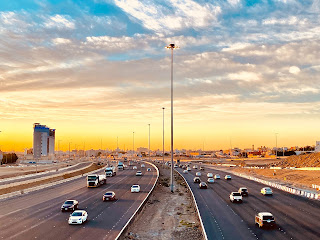Saudi Arabia: Things You Should Know About the Desert Land
Saudi Arabia 95 of the country is a scorching hot desert Dunes and infertile l. Even though Saudi Arabia is one of those six countries that doesn't have any permanent rivers.
And has only four inches of rain a year. It exported with vegetable fruits and dairy products all around the world even in the 1990s.
Saudi Arabia was one of the largest wheat exporters in the world. If we zoom in there is something interesting going on in this country.
There are a lot of huge circular greeneries spread out along the desert all across the country. Even in the middle of the desert and these are farmlands more specifically.
Center pivot irrigation farms the sheer magnitude of agricultural projects in Saudi Arabia has been huge for the perspective in 196.
Saudi Arabia Land Scale
It had 11400 square kilometers of arable land. Comprising 0.5 percent of the country and in 2016 it has almost 35 000 square kilometers, which is triple the amount of fertile land. As compared to 60 years ago.
35 000 square kilometers is a bigger area than the countries like Belgium and Armenia in the past 60 years.
Saudi Arabia has transformed 24 000 square kilometers of desert in fertile land into fertile soil for perspective 24000 square kilometers is a bigger area than the countries like Slovenia.
Two times bigger than Qatar and the question is how this desert country transformed. Big areas into fertile land and how with its 1.5 arable land can produce.
Saudi Arabia Desert Export And Agriculture
Let alone export agricultural products when most of us think of the middle east and Saudi Arabia.
We think of scorching sun and endless oceans of sand dunes. One of the most inhospitable climates on earth but that wasn't the case. In the not-so-distant past about 10 000 years ago.
Before it was a place of rolling grasslands forests and jungles. Watered by torrential monsoon rains just like in tropical southeast Asia.
water is the most central element in the greening of the area. You might be thinking about how they got so much water to sustain large-scale farming.
Climate Of Saudi Arabia
While engineers tapped into ancient river channels now buried by the sand seeds the fossil waters were trapped in acquires.
As deep as one kilometer below the ground and it was accumulated during the periods of weather climates in the places in glacier epochs between 10 000 and 2 million years ago.
Saudi Arabia sits on huge reserves of not only oil but water as well and it has been pumping water from the glacier lake.
Eco fire enables farming and milk Production on a large scale generally irrigation of crops is important to maintain the abundance of food.
Growing population crop irrigation and farming requires large amounts of water and energy. These are expensive and becoming less available therefore it's important for farmers to conserve water and energy.
When irrigating crops conserving water and energy requires good irrigation management methods. So, one of the best ways to manage water and energy is the center pivot irrigation method in Saudi Arabia.
The Center pivot method was created by a farmer named frank Eibach in Colorado. It is recognized as one of the most effective methods to improve water distribution to farm fields.
As the name suggests center pivot irrigate in a circular pattern around a central pivot point. Pivots are capable of applying water fertilizer chemicals and herbicides this versatility improves the efficiency of irrigation practices.
Next Part will be Published Soon!




Comments